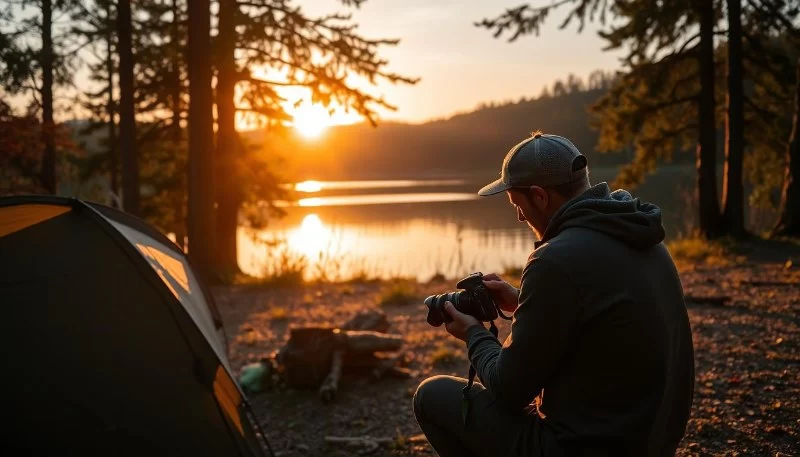- why-outdoor-photography-is-more-than-just-pretty-pictures
- understanding-light-the-most-powerful-tool-in-nature-photography
- equipment-matters-but-vision-matters-more
- composition-and-depth-that-tells-a-story
- timing-is-everything-how-to-catch-the-perfect-moment
- personal-story-photographing-the-moose-by-the-lake
- using-photography-to-remember-your-journeys
1. Why Outdoor Photography Is More Than Just Pretty Pictures
Outdoor photography is about more than snapping a few shots of mountains or forests—it’s about capturing the essence of a place, the mood of a moment, and the stories that nature whispers when you pause long enough to listen. It invites you to slow down, observe, and connect. This is especially true when you're surrounded by unspoiled wilderness like that found at places such as Pine Cliff Resort.
2. Understanding Light: The Most Powerful Tool in Nature Photography
Lighting can transform the same scene from mundane to magical. Early morning and late evening—often called the golden hours—cast soft, directional light that creates depth and mood. Overcast skies can be perfect for waterfalls and forests, diffusing sunlight and eliminating harsh shadows. Learning to anticipate how light moves across the landscape is critical for crafting striking photos.
3. Equipment Matters, But Vision Matters More
3.1. Choosing the Right Gear for the Terrain
You don’t need the most expensive DSLR to get stunning shots. A reliable mirrorless camera, or even a modern smartphone with manual mode, can work wonders. Bring a lightweight tripod, extra batteries, and weather protection. Especially when hiking remote trails, portability and readiness outweigh technical perfection.
3.2. Lens Selection Based on Subject
A wide-angle lens is perfect for sweeping landscapes, while a zoom lens brings wildlife into crisp focus without disturbing their habitat. When staying at remote nature retreats like Pine Cliff Resort, having both in your pack can mean the difference between an average shot and a once-in-a-lifetime capture.
4. Composition and Depth That Tells a Story
Nature photography isn’t just about what’s in front of you—it’s how you frame it. Use foreground interest like rocks, branches, or reflections in water to create depth. Apply the rule of thirds to avoid centering your subject. Leading lines—like trails, rivers, or rays of light—can guide the viewer’s eye naturally through your frame. Good composition engages the viewer beyond the initial glance.
5. Timing Is Everything: How to Catch the Perfect Moment
5.1. Wait, Watch, and Anticipate
Sometimes the best photos require patience. Whether it's waiting for a bird to land, the wind to still, or clouds to part just right—nature moves at its own rhythm. Knowing this separates casual snapshots from compelling, emotional photography.
5.2. Don’t Rush the Scene
Spend time understanding the landscape before you shoot. What makes it special? Is it the silence? The movement? The texture of a tree against the morning mist? Sit for a moment and observe—then raise your camera.
6. Personal Story: Photographing the Moose by the Lake
Last autumn, while staying at Pine Cliff Resort, I ventured out at dawn with my camera in hopes of catching the lake’s reflection. Instead, I stumbled upon a moose feeding at the shoreline. I crouched behind a fallen tree, heart pounding, and waited. Ten minutes passed. Then he looked up. The soft mist, the mirror-like lake, and the stoic moose created a shot that still lives on my wall. That one image told a whole story—of wildness, peace, and presence.
7. Using Photography to Remember Your Journeys
Photos are more than art—they’re memory keepers. Every trail hiked, every waterfall stumbled upon, every campfire shared can be revisited through an image. Print your favorites. Share them. Let your trips become visual stories. And when you're planning your next trip, especially if you're heading into the great outdoors, don't forget to explore what’s available at Pine Cliff Resort for gear, trails, and nature-friendly accommodations tailored for photographers.







